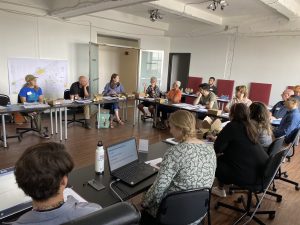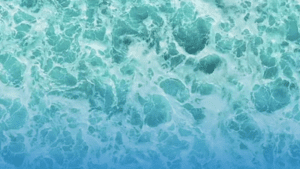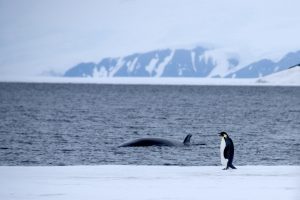As the Capacity Building and Stakeholder Engagement Fellow in the NOAA Ocean Acidification Office, the overarching goal of my position is to help the program support our community members to effectively reach their goals. Part of my portfolio this year is capacity-building for ocean acidification research and monitoring in the Caribbean region. To start, capacity building strengthens the abilities of individuals and organizations to address challenges by providing the resources and knowledge to build resilience for changing ocean conditions. Here are four of the best tips I learned these last six months on how to support capacity building efforts for ocean change:


Ocean acidification happens when carbon dioxide from the atmosphere is absorbed by the ocean. The pH of the ocean will decrease (making it more acidic), and ultimately, this alters the chemistry of the seawater. Many marine organisms use the calcium carbonate dissolved in seawater to create their shells and skeletal structures. As more carbon dioxide is absorbed by the oceans, the number of hydrogen ions increases, creating more opportunities for carbonate ions to bond with them instead of calcium. Without calcium carbonate available, calcifying organisms, such as corals, that have a hard outer skeleton of calcium carbonate are extremely vulnerable to acidification conditions because there is not enough calcium carbonate for them to build their structures, and sometimes they can be so affected that the structures they have already built may dissolve.
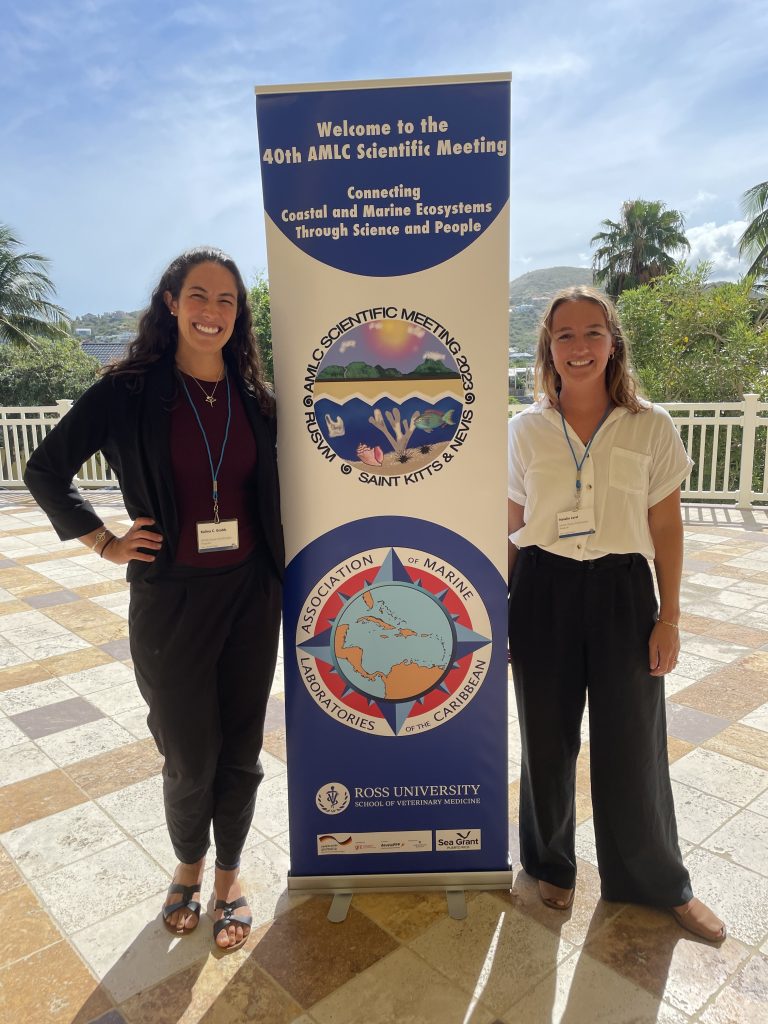
The impacts of ocean acidification on marine ecosystem health may be irreversible. It may affect many species that hold economic and cultural value in the Caribbean. Ocean acidification is a global issue, but its effects vary locally. In coastal zones especially, it can threaten Caribbean island resiliency.
1. Get input from community members first.
Along with our partner organization, The Ocean Foundation, my cohort member Kalina Grabb and I conducted a needs assessment survey. We included community members who are currently conducting research on ocean acidification, ocean observation, or water quality in their countries. The overall goal is to better inform policymakers and funding agencies in the Caribbean about ocean acidification conditions and the barriers to monitoring and research. The survey reached over 65 individuals from 25 different Caribbean nations.
Based on survey results, we facilitated meetings for Caribbean community members. From these meetings and the survey, we learned that the community was interested in forming a Caribbean Global Ocean Acidification Observing Network. GOA-ON Hubs are grass-roots, community-driven networks that work collaboratively to collect ocean acidification data to support adaptation tools, such as regional modeling forecasts. There are currently nine regional hubs around the world, however, the Caribbean does not have one yet! Because Hubs are grassroots organizations, our role has been to share the survey results and provide a meeting space for scientists interested in the steering committee leadership role. We can provide resources for decision-making and make advantageous connections, but we have no decision-making influence.
2. Leverage existing networks.
There are several networks already working on ocean acidification and ocean observation in the Caribbean. Existing networks offer access to resources, shared knowledge, and new partnerships. Within NOAA alone, we have the NOAA in the Caribbean group, the NOAA Regional Collaboration Network, Puerto Rico Sea Grant, the Caribbean Coastal Ocean Observing System, and the NOAA Coral Program to name a few. To establish a new GOA-ON Hub, we needed to gain access to international networks. So far, we have engaged with the Intergovernmental Oceanographic Commission of UNESCO Subcomission for the Caribbean and Adjacent Regions, The Regional Activity Centre for the Protocol Concerning Specially Protected Areas and Wildlife for the Wider Caribbean Region.and the Research Network of Marine-Coastal Stressors in Latin America and the Caribbean. Keeping in touch with members of each network to inform them of our progress has been essential for building momentum and keeping all community members engaged.
3. In-person connection is irreplaceable.
The Ocean Acidification Program (OAP) has supported Knauss Fellows for over 10 years. Professional development is integrated throughout our fellowship year. This includes opportunities to participate in stakeholder workshops and international conferences. At the start of my fellowship, I attended a regional vulnerability workshop in Puerto Rico to learn about perceptions and concerns regarding ocean acidification from local stakeholders.
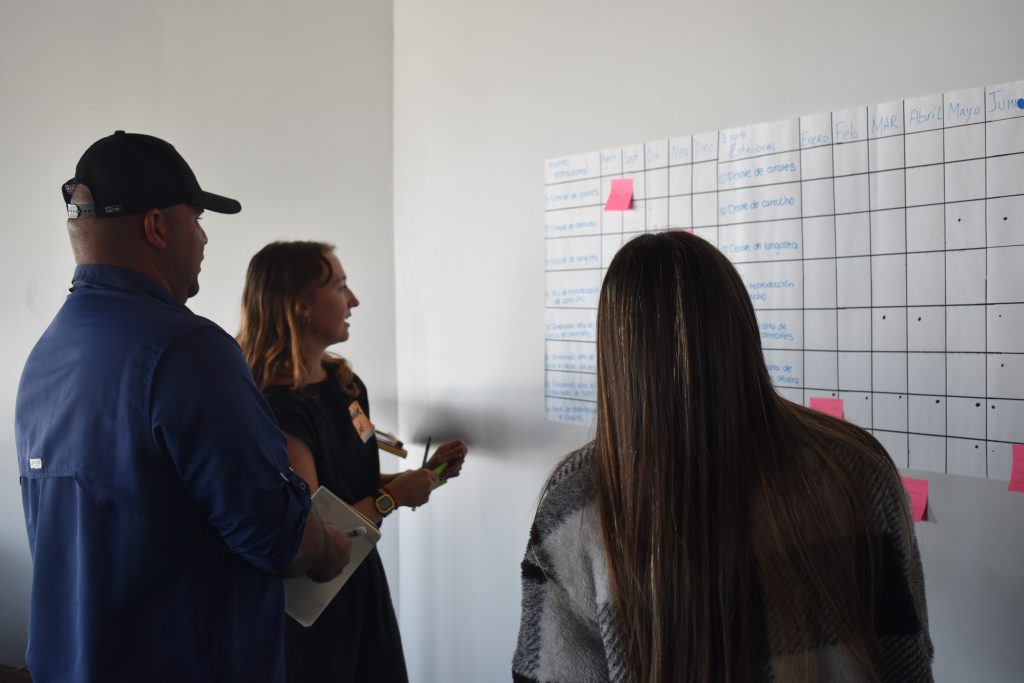

The fishermen were concerned about the Queen conch fishery – one of the most valuable commercial fishing species in the Caribbean, and is now listed as a threatened species under the Endangered Species Act. So, I brought that information back to OAP leadership and identified a new potential area for funding species sensitivity to ocean acidification.
Next, Kalina and I presented the results of the needs assessment survey at the Association of Marine Laboratories of the Caribbean (AMLC) Scientific Meeting in St. Kitts in May, and the Association for the Sciences of Limnology and Oceanography (ASLO) Aquatic Sciences meeting in Spain in June. During both conferences, we were able to connect in person with community members from the Caribbean interested in expanding ocean acidification efforts in the region. At the AMLC meeting, we organized an ocean acidification meet and greet after our presentation to have a space for interested conference attendees to chat about their work and ask questions about the GOA-ON Hub or Coastal Acidification Networks in a more informal social setting. Scientists we engaged with at AMLC are now leading the charge for the GOA-ON Hub organization.
4. Take action on specific goals.
At the beginning of our Knauss year, Kalina and I set tangible goals for the Caribbean capacity-building portion of our portfolios. First, we completed the needs-based assessment and then incorporated the community feedback to start the process of standing up a GOA-ON Hub. By setting measurable and achievable goals, we were able to recruit steering committee members and provide them with tangible tasks for the Caribbean GOA-ON Hub. Right now, we are encouraging steering committee leaders to take charge of composing guidance documents necessary to initiate a Hub. All GOA-ON Hubs are built at the community level and based on specific regional interests for ocean acidification research and monitoring. Once the terms of reference and new hub questionnaire documents are complete, the committee can meet with the GOA-ON steering committee to officially become a regional hub. Our goal is to have this completed by the end of the Knauss fellowship year.
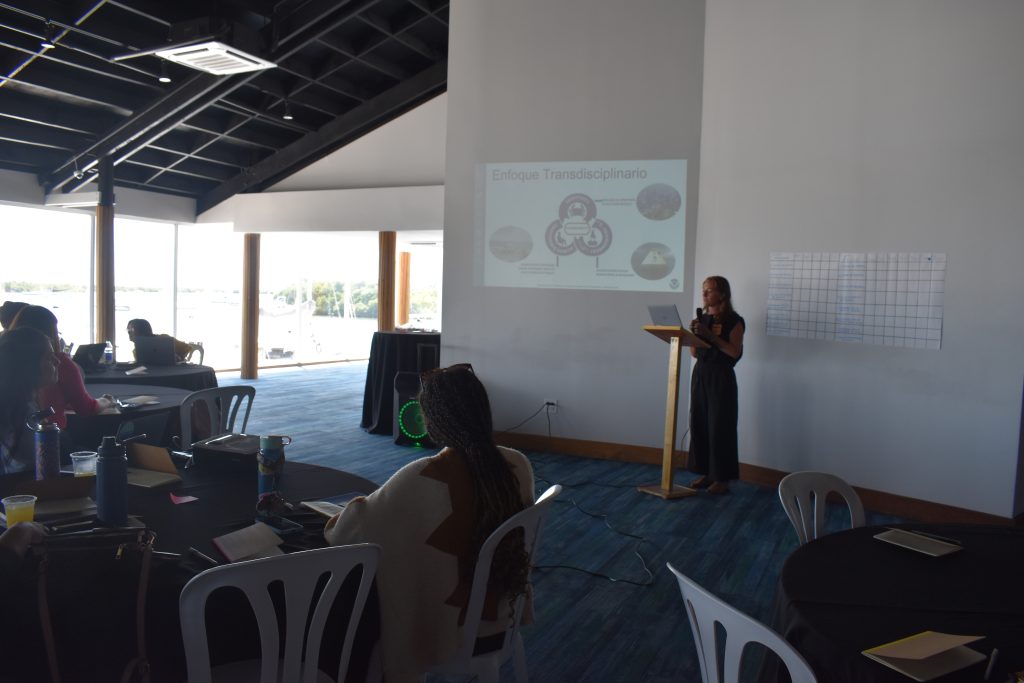

The Caribbean region will remain a focus area for the NOAA Ocean Acidification Program’s capacity-building efforts to increase observing efforts, biological sensitivity research of important commercial fisheries, and monitoring impacts on critical ecosystems such as coral reefs and mangroves. We will continue to strengthen capacity for these activities and the network of support created by the GOA-ON Hub.
The NOAA Ocean Acidification Program was my top choice for my fellowship year because I wanted to learn more about how a NOAA program office functions and work directly with partners. It has been an exciting and rewarding fellowship so far and I am motivated to keep building momentum for the Caribbean during the second half of the year!
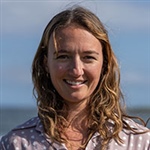

Natalie Lord
Capacity Building and Stakeholder Engagement Fellow
NOAA Ocean Acidification Office
Learn more about New Hampshire Sea Grant and how its work serves coastal communities in New Hampshire and beyond.
